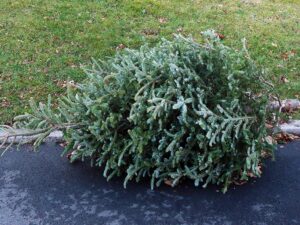L’une des raisons souvent invoquées pour lesquelles les résidents ont choisi de vivre à Laguna Woods Village est sa verdure luxuriante et son défilé apparemment sans fin d’arbres magnifiquement diversifiés et majestueux.
La vision d'une vaste canopée verte pour la communauté est née dès sa création, lorsqu'une pratique bien intentionnée mais à courte vue de surplantation a presque garanti qu'un jour, certains arbres poseraient des problèmes. Certains pins des Canaries du village posent aujourd'hui de tels problèmes.
Il est courant pour les promoteurs de surplanter des arbres dans les nouveaux lotissements afin de donner au paysage un aspect plus dense aux yeux des acheteurs potentiels. Lors de la construction de ce lotissement, la majorité des pins des Canaries étaient plantés en bosquets ou en groupes de trois à neuf arbres. Nombre de ces groupes étaient situés à proximité des bâtiments, des abris de voiture et des trottoirs.
Au sein de ces groupements, en raison de la maturité des arbres, les canopées sont devenues de plus en plus denses au fil du temps, affectant négativement leur santé à long terme.
La densité de la canopée pose un autre problème majeur. La quantité d'aiguilles, de cônes et de branches tombant sur les toits des bâtiments et des abris d'auto voisins a obstrué les gouttières, les drains de toit, les drains de cour et les descentes pluviales, ce qui coûte à United Mutual des sommes considérables en réparations structurelles. United Mutual dépense près de 150 000 dollars par an pour nettoyer les aiguilles de pin des gouttières. L'élimination des arbres proches des toits dans ces bosquets permettra aux arbres restants de développer une canopée dense et saine sans nuire à l'esthétique générale du lieu.
À l'automne 2020, le conseil d'administration et le comité d'aménagement paysager de United ont demandé au personnel d'étudier la possibilité et le coût de l'abattage de pins matures présentant au moins une des caractéristiques suivantes : bosquets, déclin de la santé, conflit entre les bâtiments et les toits et les gouttières, couvert végétal dense entravant la croissance du gazon, couvert végétal dense provoquant de nombreux tickets de ramassage de feuilles et dommages aux infrastructures. En mars 2021, le personnel a présenté ses conclusions préliminaires au comité d'aménagement paysager, qui a ensuite chargé le personnel d'élaborer un projet et de solliciter des propositions pour ces travaux.
L'équipe a également envisagé une taille réparatrice plutôt qu'un abattage. Nombre de ces arbres mesurent plus de 18 mètres de haut et sont difficiles d'accès. La taille réparatrice coûte en moyenne 1 TP4T1 320 par arbre ; l'abattage coûte en moyenne 1 TP4T1 552 par arbre. La taille atténuera certains effets négatifs, mais un entretien régulier restera nécessaire.
United Mutual compte environ 18 640 arbres, soit 79 arbres par acre. À titre de comparaison, Third Mutual en compte 39 par acre. Le projet proposé laisserait la densité d'arbres d'United quasiment inchangée, soit 77 arbres par acre, soit l'élimination d'environ 21 TP3T du parc forestier de la mutuelle.
Kurt Wiemann, directeur du service d'aménagement paysager, et son équipe sont de fervents défenseurs des arbres qui n'abattaient jamais un arbre inutilement. Leur mission est de protéger les actifs d'United Mutual, et ce projet vise précisément à atteindre cet objectif. Le nombre initial d'arbres indiqué n'est qu'un point de départ ; les arboristes travailleront avec les résidents au cours des trois prochains mois pour réexaminer les arbres identifiés comme touchés afin de garantir la santé de notre forêt urbaine et la qualité de vie de nos résidents.
NOTE: Après avoir entendu les préoccupations des résidents, le Comité d'aménagement paysager d'United Mutual a décidé de suspendre le projet pour un examen plus approfondi. Le personnel a été chargé de faire appel à un spécialiste de l'environnement et à un arboriste indépendant pour examiner le projet proposé et ses impacts.
Pour plus de nouvelles du village, cliquez sur le tag « Quoi de neuf dans le village » ci-dessous.





